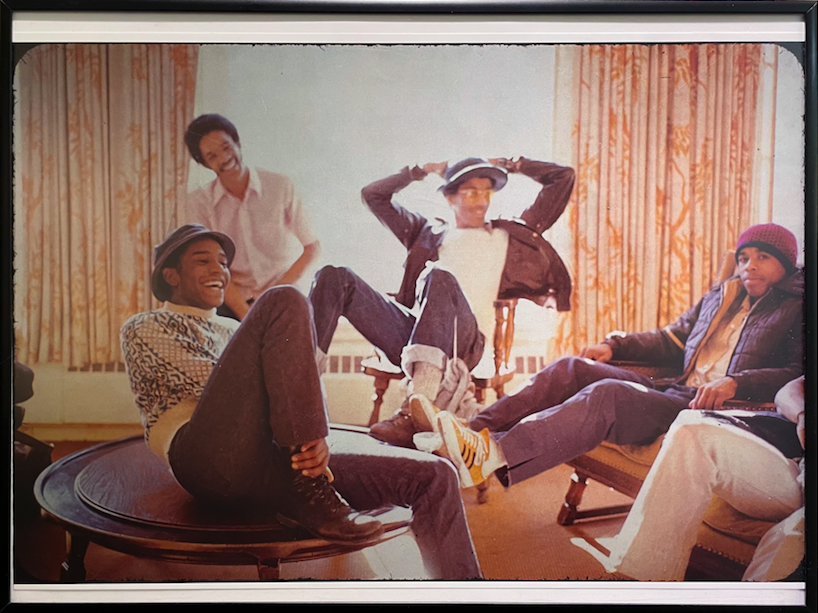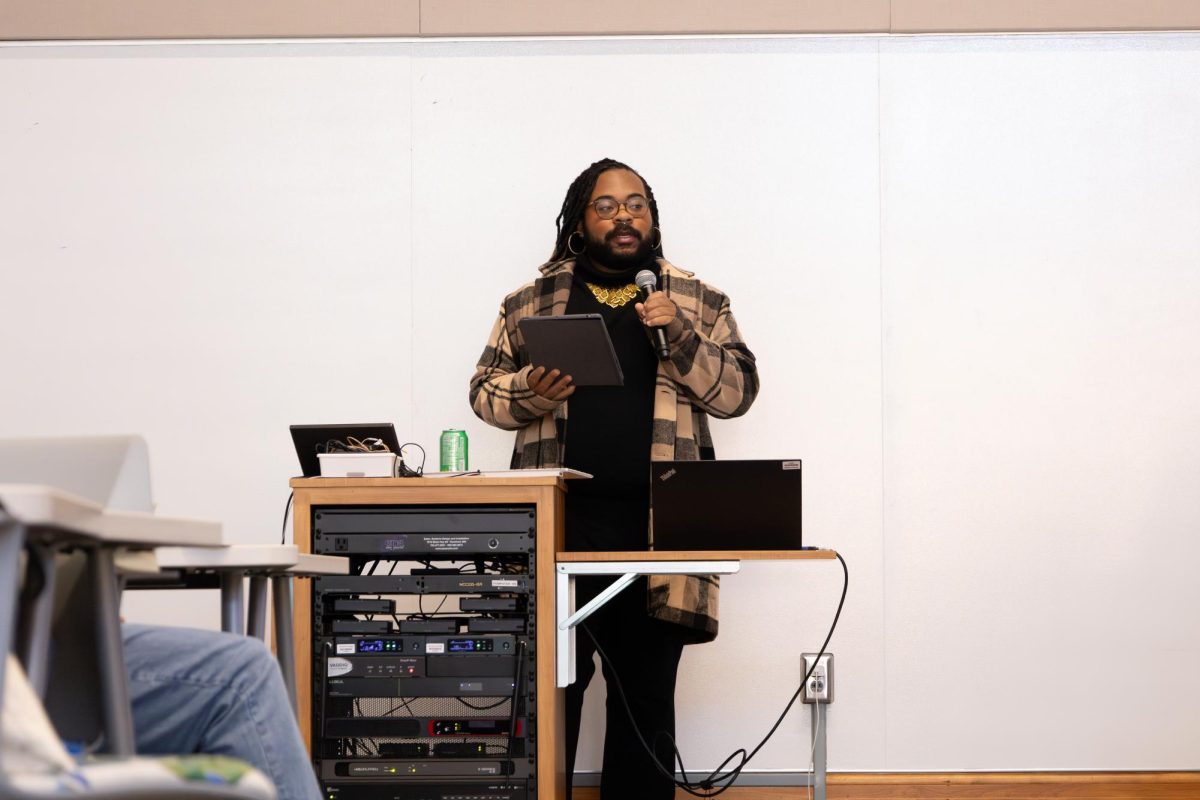As part of Black History Month, a photography exhibit has been on display in Sayles-Hill Campus Center titled Black at Carleton, 1966-1979. It will be up until February 28. The exhibition was a collaboration between the Student Activities Office (SAO) and Office of Intercultural Life (OIIL) and looks back fifty years to celebrate the lives of Black students at Carleton during a crucial time in history.
According to the SAO website, a Black at Carleton publication from 1968 “contains reflections, quotes, and photographs from the members of Students Organized for Unity and Liberation (SOUL) about what it is like to be a Black student at Carleton. Many of the quotes from students are very frank about their loneliness, sense of identity and experiences with overt and subtle racism here on campus. It also discusses self exploration, community building and the opportunities that can come from education.” Inspiration for the exhibition was drawn from this publication, which is rife with photos of the Black student experience in the late 60’s and early 70’s. An outside project of Jevon Robinson ‘22 on the history of Black House that procured some great photos from the 1960’s and 1970’s from the Carleton Archives also inspired the exhibition. Renee Faulkner, the director of OIL said, “we thought expanding on that idea would be a great way to celebrate Black History Month this year.”
Faulkner expanded on the importance of having an exhibit like “Black at Carleton” right now: “I’ve heard from a number of students recently—-especially Black students—-that they are wrestling with what it means to be a person of color at Carleton right now. They are looking for ways to contextualize what can feel like an isolating experience. Black History Month and this exhibit offer a way for Black students to see themselves as part of a larger context—a legacy, a community—of Black Excellence.” A goal of this exhibition is not only to bring awareness to lived experiences of Black students at Carleton, but also to create a space for Black students to contextualize their college experience.
Once the goals and ideas to curate a photo exhibition celebrating the Black student experience at Carleton were born, Faulkner and student workers at the SAO and OIIL were tasked with looking through the archives for photos and artifacts that would be of interest to the exhibition. Faulkner described the experience as fascinating and expanded to say that “the College Archives houses a treasure trove of artifacts from the time period. In addition to photos there is a lot of written communication—some of it rather shocking—between students, faculty, the Board and the President that tell some very interesting stories about Black student life in the 60’s and 70’s.”
When it came to narrowing down the photos and and choosing which would be displayed in the exhibition, Faulkner said that, “We chose photos that we thought best exemplified Black students’ day to day lives, as well as photos that presented events and places that are significant to Carleton’s Black student history like Ebony II and Black House.” In addition to this criteria that guided the selection process, they also focused on choosing pictures that were spaces students would recognize today, like Sayles or in front of CANOE/Wade House (which was Black House at the time). It was also important to take into account the quality of the photos, and whether they had any identifying information or credit, which Faulkner noted most did not. She added that, “we chose artifacts that represented Black students’ academic, social and extracurricular pursuits like an issue of the Black student newspaper, Voice of the Struggle, a playbill from a show produced by the Black Dramatic Arts Group and a reproduction of We Together Are, the minority literary magazine.”
Once the photos and artifacts had been chosen, the exhibition opened on February 4. The exhibit note stated that “In the midst of the Civil rights movement and a nationwide focus on people of color in higher education, Carleton graduated its first two Black women and made a commitment to expanding the Black student body. As the Black student population increased in 1965, so too did Black student activism, creative expression, and intellectual curiosity.” The subsequent photos and artifacts reflect this statement and expose a facet of Carleton history that is not often public.
Faulkner and everyone else who helped work on this project have high hopes for what students will get out of this exhibition: “We hope to highlight parallels between these historical events and students’ experiences today, [and] we hope people will reflect on the significant progress that has taken place here in the last 50 years and the ways in which we can all contribute to the next generation of progress.”
The exhibition will be open in Upper Sayles until February 28, and everyone is encouraged to view!











